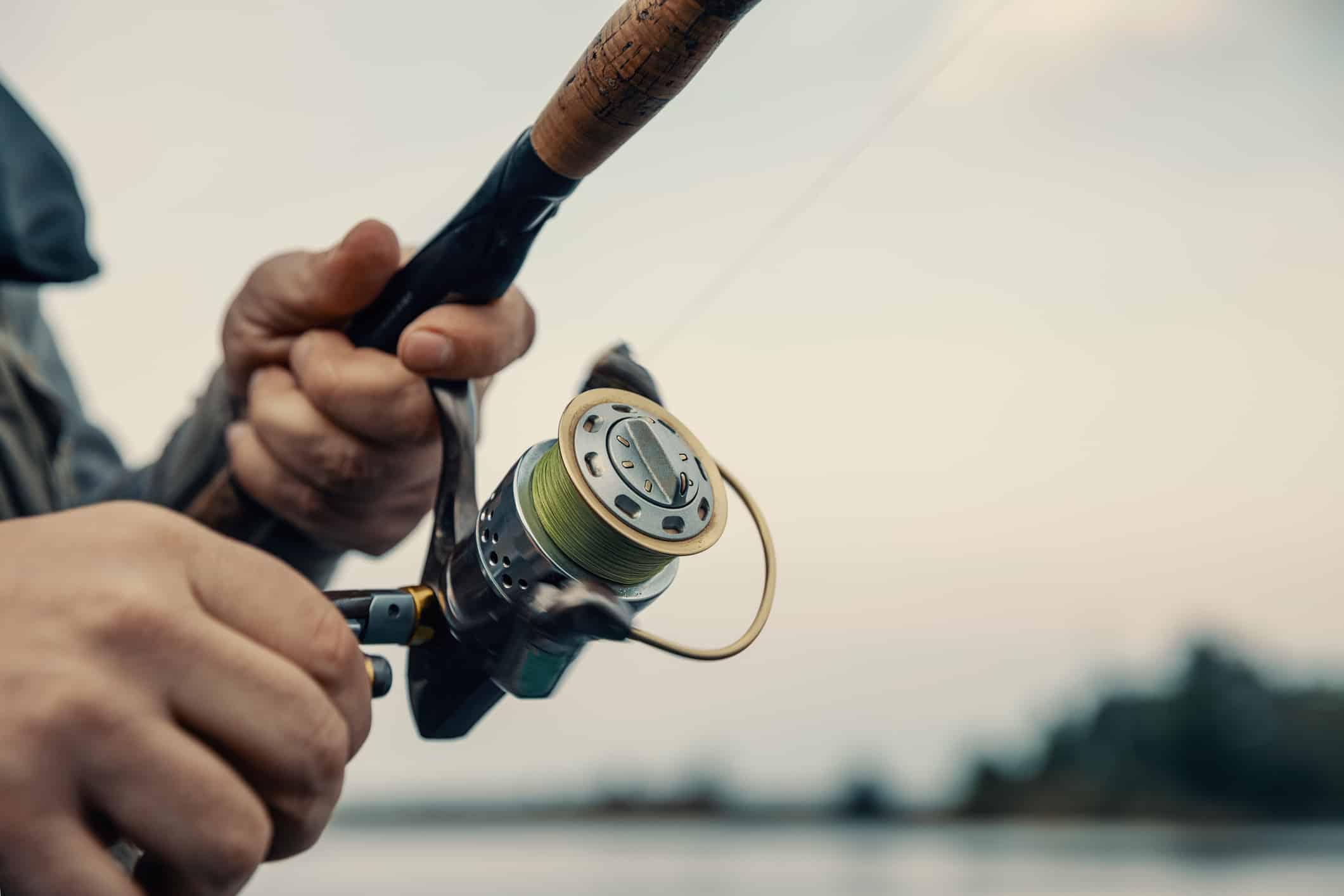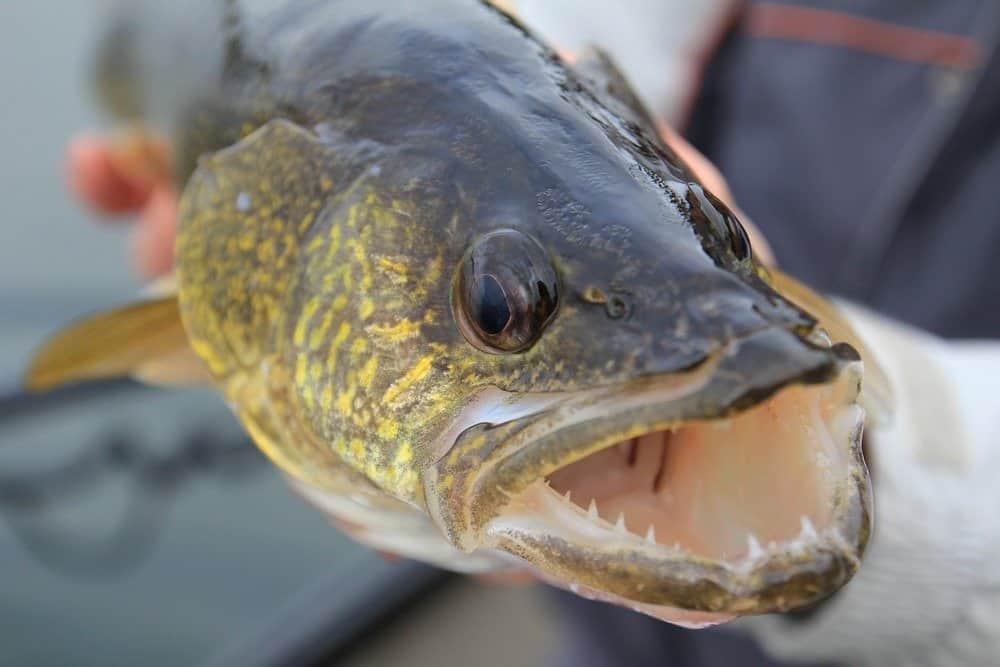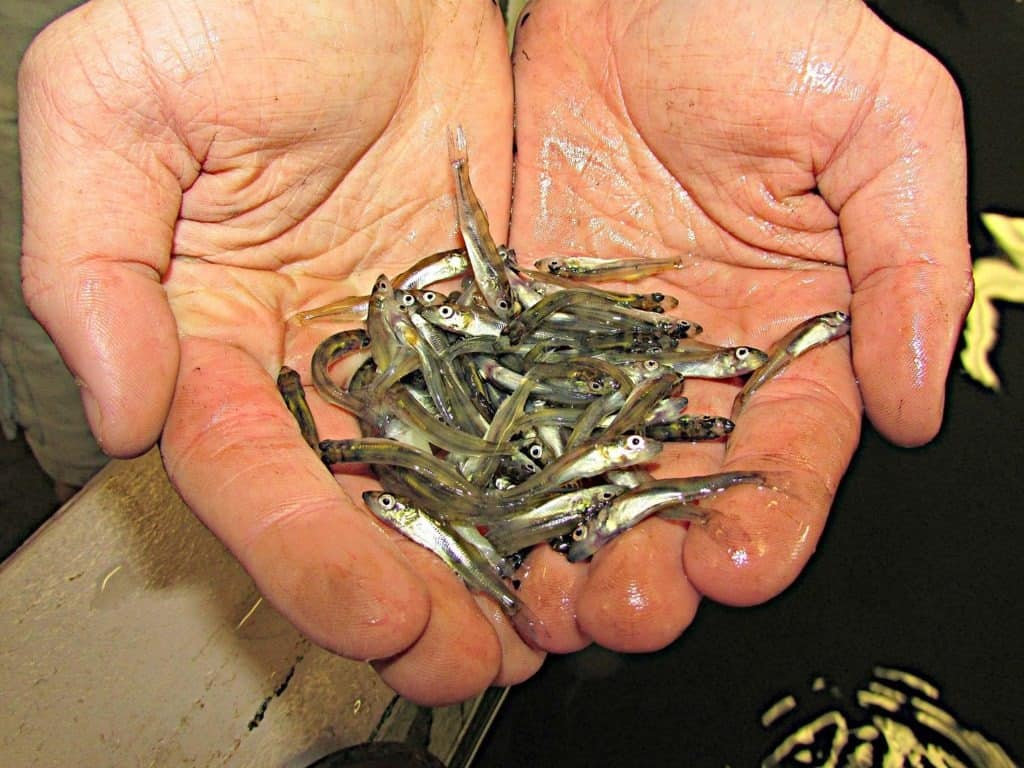Walleye is a freshwater fish that’s highly sought after by anglers across the country. It’s known for its delicious flavor and challenging fight, making it a popular game fish.
In Missouri, walleye is a valuable resource for both the economy and the recreational fishing industry. It’s a prized catch that draws thousands of anglers to the state yearly.
But with increasing threats to walleye populations, it’s essential to understand the importance of conservation efforts.
So, whether you’re a seasoned pro or a beginner, let’s dive into the walleye fishing world in Missouri and discover what makes this fish special.

©RLS Photo/Shutterstock.com
The Largest Walleye Ever Caught in Missouri
The largest walleye ever caught in Missouri weighed an astounding 21 lbs.,1 oz. Angler Gerry Partlow caught the fish at Bull Shoals Lake in Ozark County.
The Largest Walleye Ever Caught Worldwide
The largest walleye ever caught worldwide weighed 22.7 50 lbs. Angler Al Nelson caught the fish in Greers Ferry Lake, Arkansas, USA, in 1982. While there are many claims of even larger walleye being caught, this is the largest specimen officially recognized by the International Game Fish Association (IGFA).

©FedBul/Shutterstock.com
Habitat and Distribution of Walleye in Missouri
Now that we know what walleye is let’s talk about where to find it in Missouri.

©iStock.com/scgerding
Natural Habitat
Walleye is a cold-water fish that thrives in large, deep lakes and rivers with clear water.
In Missouri, you’ll find walleye in the following lakes and rivers:
- Stockton Lake
- Table Rock Lake
- Lake of the Ozarks
- Missouri River
- Osage River
- Current River
Distribution
Walleye populations are not evenly distributed throughout Missouri. Instead, they’re most commonly found in the Ozarks region because it’s a more suitable habitat for them. But you can also find them in other parts of the state, such as the Mississippi and Missouri Rivers.
Factors Affecting Walleye Habitat and Distribution
Several factors impact the habitat and distribution of walleye in Missouri. These include:
- Water quality
- Temperature
- Prey availability
- Fishing pressure
For example, walleye prefer clear, cool water with plenty of forage fish. So, pollution or habitat destruction can harm their populations. Similarly, overfishing or improper fishing techniques can also reduce walleye populations in certain areas.
Fishing for Walleye in Missouri
If you’re interested in walleye fishing in Missouri, you should know a few things before hitting the water. Here are some tips for a successful walleye fishing trip.

©iStock.com/smiltena
Best Places to Fish
Some of Missouri’s best places to catch walleye include large, deep lakes such as Lake of the Ozarks, Table Rock Lake, and Bull Shoals Lake. Additionally, you can catch walleye in rivers like the Missouri, Osage, and Current.
Fishing Techniques
There are many techniques for catching walleye in Missouri. But some of the most popular include:
- Jigging
- Trolling
- Casting
Use a light jig head and a plastic worm or minnow bait when jigging for walleye.
Trolling involves slowly moving your boat while dragging a lure behind you. It’s effective for covering a lot of water quickly.
Casting is best when targeting specific areas, such as rocky points or weed beds.
Rules and Regulations
Before you start fishing for walleye in Missouri, familiarize yourself with the rules and regulations. The Missouri Department of Conservation (MDC) has specific walleye fishing regulations, including size limits and catch limits. Ensure you have a valid fishing license and follow all regulations to ensure the sustainability of walleye populations in Missouri.
Walleye Management in Missouri

©ElvK/Shutterstock.com
As mentioned earlier, walleye populations in Missouri face several challenges. That’s why MDC has implemented several management strategies to ensure the sustainability of walleye populations.
Stocking Programs
One of the most common management strategies for walleye in Missouri is stocking. The MDC stocks walleye fingerlings into lakes and rivers yearly to supplement existing populations. This helps ensure that there are enough walleye to sustain recreational fishing while also maintaining healthy populations.
Size and Catch Limits
The MDC has also implemented size and catch limits for walleye to help protect populations from overfishing. In Missouri, the minimum size limit for walleye is 15 inches, while the daily catch limit is four fish per angler. These regulations help ensure that walleye have the opportunity to grow and reproduce. This is crucial for maintaining healthy populations.
Habitat Improvement Projects
Another management strategy is habitat improvement projects.
The MDC works with partners to improve habitat conditions for walleye in lakes and rivers throughout the state. These projects can include initiatives like:
- Adding artificial structures
- Removing debris
- Planting vegetation
By improving habitat conditions, walleye populations can thrive and provide anglers with more opportunities to catch these prized fish.
Significance of Walleye Fishing in Missouri

©FedBul/Shutterstock.com
Walleye fishing is a popular pastime for anglers in Missouri. Besides, it also has significant economic and recreational value for the state.
Economic Value
Walleye fishing is a significant economic driver in Missouri.
According to the MDC, the annual economic impact of walleye fishing in the state is estimated to be over $9 million. This includes money spent on:
- Equipment
- Lodging
- Food
- Other related expenses
Walleye fishing also provides jobs in the tourism and hospitality industries. These are important for many rural communities in Missouri.
Recreational Value
For many anglers in Missouri, walleye fishing is not just about catching fish. It’s also about the experience. Walleye are prized for their challenging nature, making them a thrilling catch for even the most experienced anglers. The excitement of reeling in a large walleye is hard to beat, and the memories made on walleye fishing trips are priceless.
Cultural Significance
In addition to its economic and recreational value, walleye fishing also has cultural significance in Missouri. Walleye are a beloved game fish species deeply ingrained in the state’s fishing culture. Many anglers have been fishing for walleye in Missouri for generations, passing down knowledge and traditions from one generation to the next.
Threats and Conservation of Walleye in Missouri

©
While walleye populations in Missouri are currently healthy, several threats to their long-term sustainability exist. Be aware of these threats and take the necessary steps to conserve walleye populations for future generations.
Habitat Loss and Degradation
This is one of the biggest threats to walleye populations in Missouri. Development, land use changes, and pollution can all negatively impact walleye habitat, making it more difficult for populations to thrive.
Overfishing
Overfishing is another significant threat to walleye populations. When too many fish are caught, it can lead to a decline in population numbers and negatively impact the reproductive success of the remaining fish.
Invasive Species
Invasive species like zebra mussels and Asian carp can also negatively impact walleye populations in Missouri. Zebra mussels can disrupt the food chain and reduce prey availability for walleye. At the same time, Asian carp can outcompete walleye for resources.
Diet and Feeding Habits

©RLS Photo/Shutterstock.com
Walleye are voracious predators known for their excellent eating quality. Understanding their diet and feeding habits is essential for anglers looking to catch walleye and for conservationists working to protect walleye populations.
Prey Species
Walleye in Missouri are opportunistic feeders who consume various prey species, including:
- Small fish
- Insects
- Crustaceans
- Small mammals
Some of the most common prey species of walleye in Missouri include yellow perch, shad, minnows, and crayfish.
Feeding Habits
Walleye in Missouri are primarily nocturnal feeders who often hunt at night when their prey is less active. During the day, walleye typically rest on the bottom or in cover to conserve energy for their nighttime feeding activities. They are ambush predators who often lie in wait for their prey to swim by before launching a lightning-fast attack.
Walleye Predators

©BlueBarronPhoto/Shutterstock.com
Walleye are a popular game fish in Missouri. But they’re also important to the food web in many water bodies. As with any species, walleye face natural predators that can impact their populations. Here are some of the most common walleye predators in Missouri.
Aquatic Predators
Larger fish like northern pike, musky, and channel catfish prey on walleye, especially smaller ones. Other predatory fish, like largemouth bass and smallmouth bass, may also feed on walleye, but they typically prefer other prey species.
Birds
Several species of birds, including bald eagles and ospreys, feed on fish and may prey on walleye in Missouri’s lakes and rivers.
Mammals
Some mammals like river otters and mink prey on fish and may also feed on walleye if available. Despite the presence of these predators, walleye populations in Missouri remain healthy thanks to effective management and conservation efforts. Protecting walleye habitat and limiting harvest ensures that walleye remain an important part of Missouri’s aquatic ecosystems.
Walleye Breeding

Breeding is a crucial aspect of the life cycle of walleye in Missouri. Walleye breed in the early spring. Understanding their breeding behavior and habitat requirements is critical to ensuring the long-term sustainability of walleye populations.
Spawning Behavior
Walleye in Missouri typically spawn in the shallows of rivers and lakes, often in rocky or gravelly areas. Male walleye migrate upstream to find suitable spawning habitats. They’re followed by the females a few weeks later. During spawning, the female walleye will lay her eggs on the substrate, and the male walleye will fertilize them.
Preferred Spawning Habitat
Walleye in Missouri prefer clear, cold-water streams, rivers, and lakes with rocky or gravelly bottoms for spawning. These habitats are critical for successful walleye reproduction. They provide the necessary substrate for egg-laying and protect the eggs from predators.
Walleye spawning habitats are also important because they provide the young walleye with the necessary food and shelter to grow and mature.
Reproductive Success
Successful walleye reproduction can be challenging due to various factors, such as the loss of suitable spawning habitats and competition for food and other resources.
The reproductive success of walleye in Missouri depends on various environmental factors, including:
- Water temperature and flow
- The availability of prey species
Healthy populations of prey species are essential for successful walleye reproduction, as walleye require a steady food supply to grow and mature.
Conservation Considerations
Walleye in Missouri face numerous threats to their breeding habitats, including human activities that can damage or destroy critical spawning areas. To ensure the long-term sustainability of walleye populations in Missouri, it is crucial to protect their spawning habitats.
Anglers can help protect walleye spawning habitats by avoiding these areas during breeding and practicing responsible catch-and-release techniques.
Conservation agencies like the MDC are also working to restore and protect walleye habitats and populations through various conservation efforts.
Key Takeaways
Walleye fishing in Missouri offers a unique and exciting experience for anglers of all levels. In addition, it provides significant economic and recreational value to the state. But be aware of the threats to walleye populations and take steps to conserve them for future generations.
Through conservation efforts and responsible fishing practices, we can ensure that walleye populations in Missouri remain healthy and sustainable. By doing so, we can continue to enjoy the thrill of reeling in a large walleye and preserve this valuable resource for years to come.
The post Discover The Largest Walleye Ever Caught in Missouri appeared first on AZ Animals.
from Animal News, Facts, Rankings, and More! - AZ Animals https://ift.tt/8ElOI1F